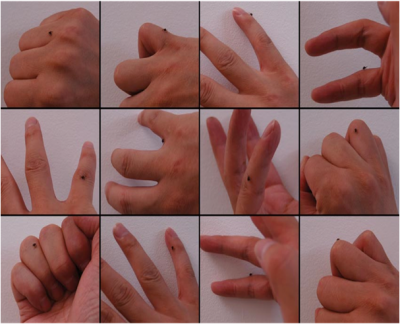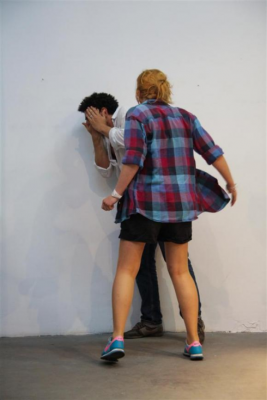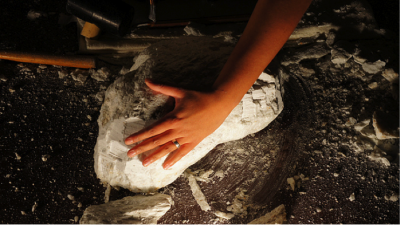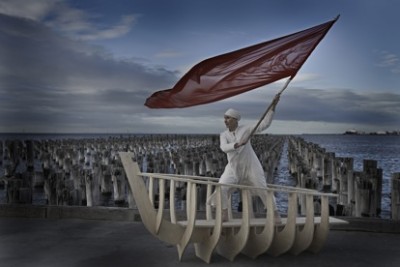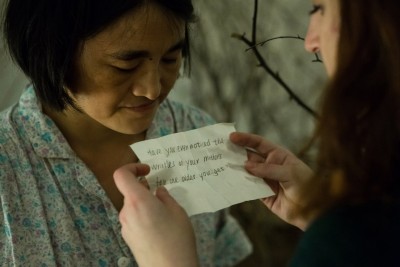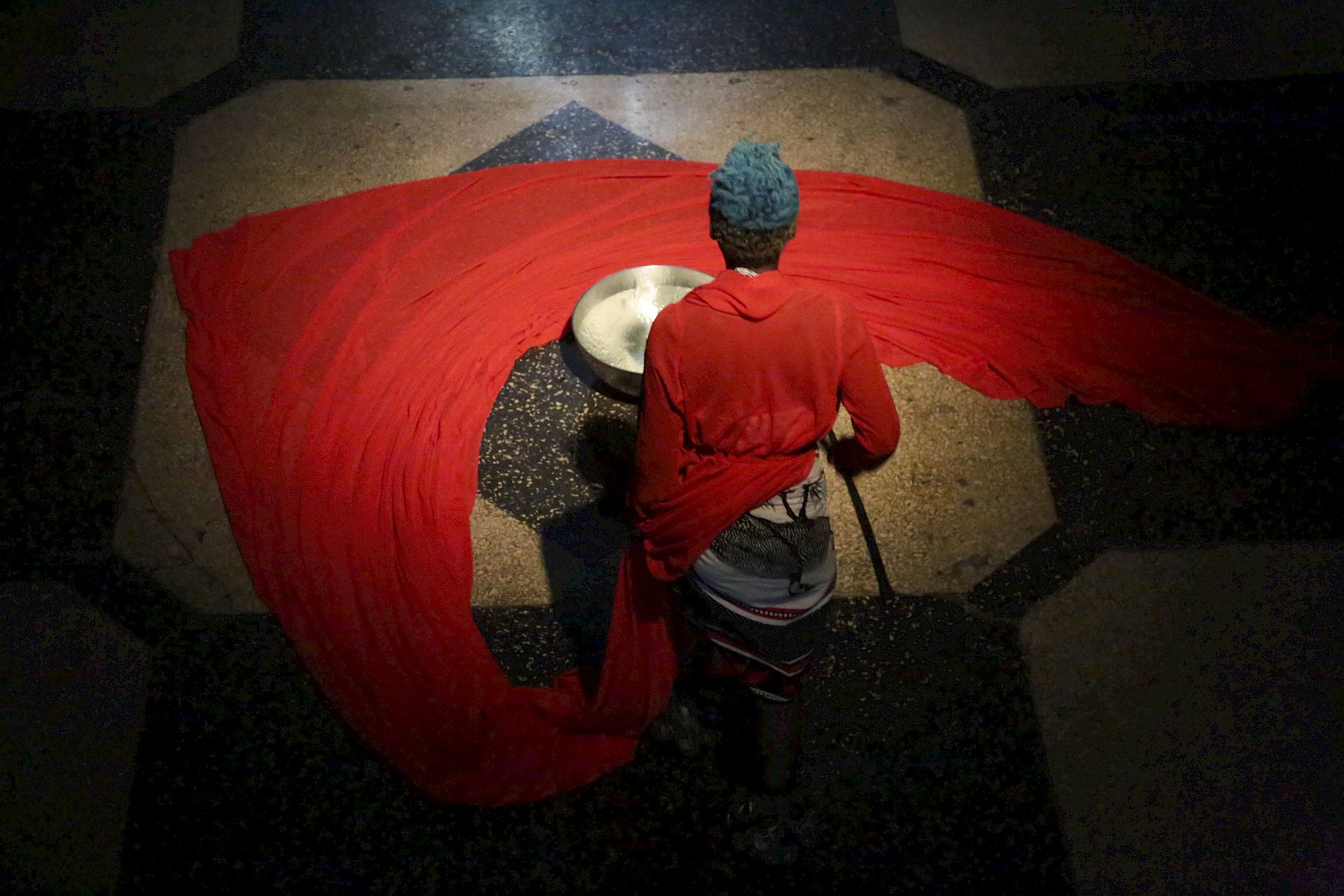Present Tense Series
Performance Art Programme 2014
Curator Chiara Cartuccia
[T]he lover of universal life enters into the crowd as though it were an immense reservoir of electrical energy. Or we might liken him to a mirror as vast as the crowd itself; or to a kaleidoscope gifted with consciousness, responding to each one of its movements and reproducing the multiplicity of life and the flickering grace of all the elements of life. He is an “I” with an insatiable appetite for the “non-I”, at every instant rendering and explaining it in pictures more living than life itself, which is always unstable and fugitive.
What does it mean to take into analysis the present of performance art, if performance art itself never exists outside the present time? Performance art is a flux, but it does not run in a linear way. Instead, it builds systems of vortexes. Performance art is always present, but contains in itself the long breath of the past and the possibilities of the future.
When completely aware of its inner temporality, a performance resembles the dialectical image described in Walter Benjamin’s unfinished work Passagen-Werk (Arcades Project): “Every present day is determined by the images that are synchronic with it: each ‘now’ is the now of a particular recognisability. In it, truth is charged to the bursting point with time … It is not that what is past casts its light on what is present, or what is present its light on what is past; rather, image is that wherein what has been comes together in a flash with the now to form a constellation. In other words: image is dialectics at a standstill.” [1] Same as the Benjaminian dialectical image, the performance artist’s gesture operates within a present that is the living stage of the encounter between what has been and what is yet to come.
The presence in performance art means, first of all, the presence of a body, the body of the artist and the body of the spectator, although it is not necessary to have them both present at the same time and space. Absence, the other face of presence and its necessary complementary, works in an analogous way, stimulating a connection and therefore a dialogue.
Performance art brings to a paradoxical synthesis the need of a clear critical distance between the theatrical action and the audience (alienation), as proposed by Brecht’s ‘Epic Theater’, and the violent confusion of life and representation (identification), demanded by Artaud in his ‘Theater of Cruelty’. This means a performance can make the members of the audience aware of the current socio-political situation, and inspire an active reaction to it, while pushing them to a passionate identification with the physicality of the performer. In this context, the spectators abandon their condition of passive viewers to become, using the definition of the French philosopher Jacques Rancière, emancipated spectators, engaged in the event as “active participants in a collective performance”. [2]
Working with the body, performance art says something about humanity all the time, and for this reason every performance can be considered a political event, even if it does not speak political slogans. Using the body as the first instrument of work, as well as the last landing point, performance art has the power to inquire topics, such as cultural identity, gender or sexual orientation, compliance with or rejection of certain socio-economic structures, in the most direct or indirect, strong or subtle manner. The performance artist, like the painter of modern life portrayed by Baudelaire, is a living mirror, a conscious kaleidoscope that constantly reacts to the incessant flow of the real.
Performance art has to be honest, because you cannot lie in the present tense.
Performance art can appear in many different places, but constantly occupies the same space, the space of the encounter between the gesture and the eye, the voice and the ear. The space of the “here and now”. According to Allan Kaprow: “Performance is an attitude about involvement on some plane in something going on”. [3] Performances are always able to renovate their presence, using direct memory and other mechanisms of remembrance, like documenting, archiving, reenacting, as tactical instruments. Performance art has no structure, no general rules, but is a heterogeneous, multiple, continuous chain of new and renewed presences.
Present Tense Series is a composite program meant to investigate practices and theories of contemporary performance art through a series of live performances, artist talks and workshops, with the final aim to open up a significant, fruitful discussion about this particular field of artistic production, which eschews any codification and possible classification.
The program, conceived for SAVVY Contemporary, will bring together some of the most interesting performance artists from five continents, in order to involve them in an open dialogue, in the context of which the gallery will serve as a catalyst of energies and ideas. pResent Tense Series does not follow up any curatorial ideology, no theoretical preconceptions have to be put at the base of this path. The key factor in the choice of the invited artists is the necessity to always propose projects that refer directly, and meaningfully to the reality of present times, in all their complexity and mutability.
The present tense is also the grammatical tense in which SAVVY Contemporary speaks as an art institution. With a new space, a new project dedicated to documentation of performance art, SAVVY.doc, and a yearlong, internally curated performance art program for 2013/2014, SAVVY Contemporary aims to assert itself as one of the main centres for research, study and experimentation on and around performance art(s) in Berlin, and Europe. The performance art program is the backbone of a wider project that will be enhanced by the direct intervention of the audience, and expanded through external curatorial collaborations, which are supposed to create and develop new trajectories along the way.
[1] Benjamin, W, The Arcades Project, trans. Howard Eiland and Kevin McLaughlin, Cambridge, MA: Belknap 1999, p. 463.
[2] See Ranciere, J, The Emancipated Spectator, London: Verso 2008
[3] Kaprow, A, “Nontheatrical Performance”, in Essays on the Blurring of Life and Art, Berkeley, CA: University of California Press 1993, p.181

